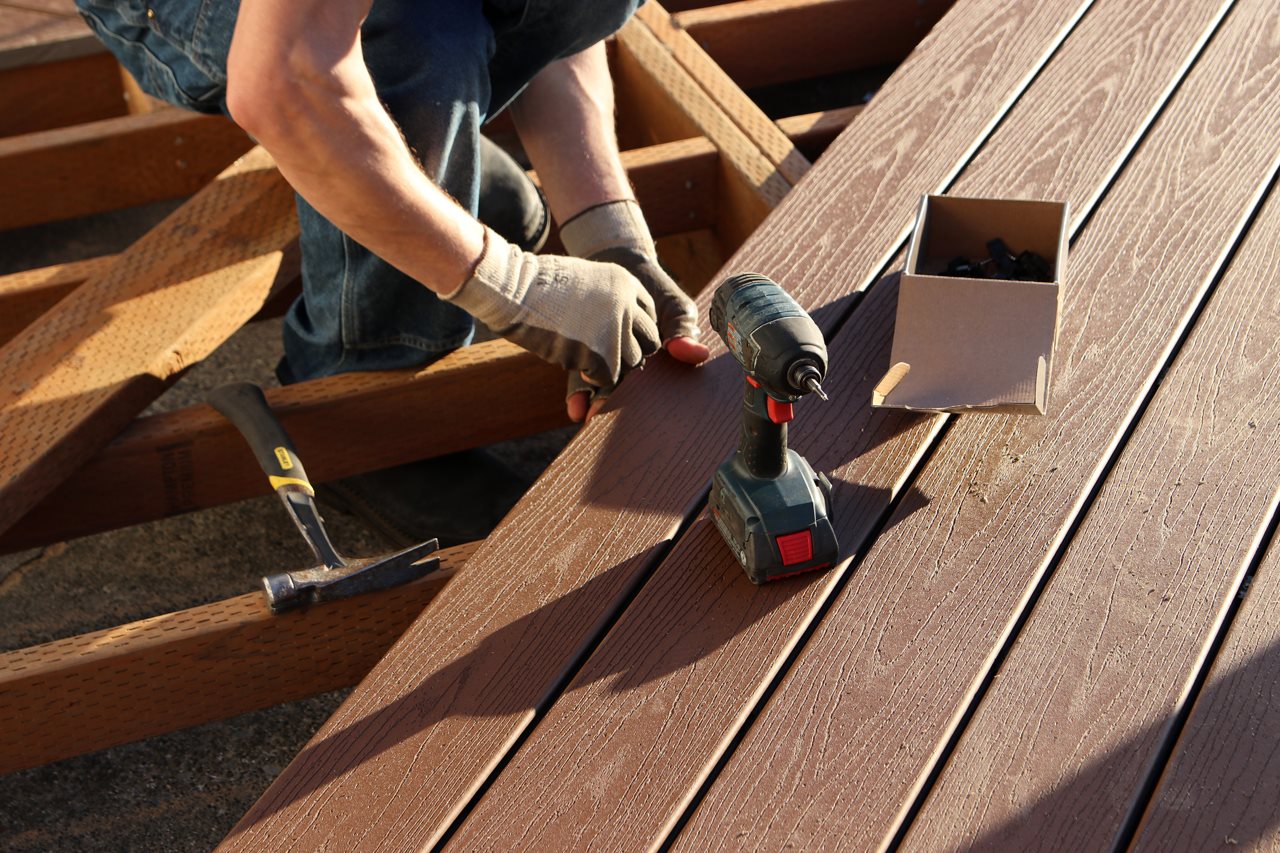2021-02-26T08:01:00
(BPT) – Anyone who suffers from health challenges knows how difficult it can be — not only physically, but also emotionally. For those coping with rare disorders, navigating life can be even more challenging.
Neuromyelitis optica spectrum disorder (NMOSD) is a rare, often life-altering disease caused by inflammation in the central nervous system characterized by immune-mediated damage to the optic nerve, brain stem and spinal cord. It can manifest in a variety of ways — vision impairment or blindness, muscle weakness, paralysis, pain, fatigue — which can cause diagnostic delays and misdiagnosis for those with the condition. Prior to diagnosis, many individuals have never heard of NMOSD, leaving them wondering how this disease will impact their lives.
In recognition of NMOSD Awareness Month in March, three individuals living with NMOSD — Carla, Panga and Christine — aim to raise awareness of the disease by sharing how they learned about their diagnosis and found ways to cope as unique as their experiences.
Carla — More than a diagnosis
Carla, a P.E. teacher, first experienced a strange pain in her neck. Doctors thought it was a pinched nerve and prescribed pain medication, but a few days later the pain increased. She began having difficulty grasping items, finally feeling too weak to stand. The school nurse thought she may have suffered from a stroke.
“I was a healthy, active 35-year-old who ran 5ks,” Carla thought. “How could I have a stroke?”
Based on various tests, Carla was diagnosed with Multiple Sclerosis (MS). “For months I relied on either a wheelchair, walker or cane, depending on how weak I felt that day,” said Carla.
When her symptoms worsened while she was being treated for MS, Carla was referred to another neurologist who pursued further testing — a spinal tap and blood test — to understand why she saw no improvement on treatment. These tests showed the presence of aquaporin-4 antibodies, which are associated with NMOSD but not present in patients with MS.
After her NMOSD diagnosis, Carla started treatment for NMOSD, however, she experienced two more relapses and was hospitalized due to the severity of her symptoms, including pain in her back and temporary paralysis. Carla was then referred to a neurologist who specialized in NMOSD who helped her enroll in a clinical trial for the drug now approved as Uplizna® (inebilizumab-cdon).
“While my journey to a NMOSD diagnosis included many hurdles and meeting with various physicians — I am grateful it ended with my enrollment in the N-MOmentum clinical trial. Since starting the clinical trial, I haven’t had additional relapses,” said Carla. “I haven’t experienced side effects or infusion reactions from treatment. It’s important to remember, this is my experience only. Always talk with your doctor to determine the right treatment option for you.”
Carla stays active and positive. “Fear of relapsing no longer stops me from participating in my favorite activities, like spending time with family and running,” said Carla. “I know when to take breaks but feel strong enough to challenge myself — I even ran a 5k. If you were recently diagnosed with NMOSD, never doubt your own strength.”
Panga — Arming yourself with information
Panga, 65, noticed a pins-and-needles sensation in her feet while line dancing one evening in 2015. When her feet continued hurting, she went to the emergency room where she received pain medication. After she was discharged from the hospital, the pain continued to intensify despite medication, sending her back to the emergency room. Her care team in the ER provided a different course of treatment and sent Panga home with additional medication.
The next morning, Panga ended up falling to the floor when getting out of bed. The pain in her feet was so intense she was unable to stand. Panga was diagnosed with transverse myelitis (TM), an inflammation of the spinal cord.
Determined to not let this condition control her life, Panga conducted her own research on TM and similar types of disorders to learn how others cope. During her research, she came across a story from a patient that sounded incredibly similar to her initial symptoms, but this patient had a different diagnosis — NMOSD. Eager to learn more about this disease, Panga reached out to doctors with expertise in the field who ran additional tests. They discovered that her TM was a symptom of NMOSD. Panga’s doctor recommended that she enroll in the N-MOmentum clinical trial for Uplizna.
“Always remember that you are your own best advocate. I was committed to continuing my own research to ensure I was receiving the right treatment for my condition. My research and determination allowed me to receive the correct diagnosis and begin treatment on Uplizna. Although everyone responds to treatment differently, I’ve noticed the burning pain in my legs has lessened,” explained Panga. “I also do not need a wheelchair at all times. I can now walk short distances on my own and I can still do things I love like performing with my band.”
Panga’s determination to understand more about her symptoms led her to experts who knew about her condition to get her the help she needed and better assess her treatment options.
Christine — Strength in community
Christine, 33 at the time, started noticing a strange feeling in her leg and had trouble moving while on vacation with her family. She contacted a neurologist when she arrived home, but by the time an MRI was scheduled, her symptoms had worsened — there was gradual increased leg weakness and eventually the pain had extended throughout her body — Christine was paralyzed from the chest down.
Like Panga, a neurologist diagnosed Christine with TM. After five months and intense physical therapy she was able to walk again, but everyday tasks were still incredibly difficult and Christine and her care team wanted to understand why she was still experiencing pain despite treatment. After a year of medical tests, she was referred to a different neurologist who ordered a blood test which showed the presence of aquaporin-4 antibodies and Christine finally received her correct diagnosis — NMOSD.
“Because I was having continued attacks, which often resulted in sensation differences like sensitivity to extreme cold or heat in my legs, my doctor decided to enroll me in a clinical study for Uplizna,” said Christine. “Since starting Uplizna, I haven’t had additional attacks and I’m able to engage in activities I enjoy — like chasing after my dogs.”
Living with a rare disease can feel isolating; often people with NMOSD feel alone in the symptoms they experience. To combat this, Christine has found strength in support groups and organizations like Guthy-Jackson to connect with others.
“Finding support through advocacy groups and the NMOSD community made me realize I was not alone in this,” shared Christine. “I connected with others who experienced similar symptoms as me, as well as those experiencing different symptoms of NMOSD. I not only established a support system through these relationships, but also improved my understanding of NMOSD and how it impacts everyone differently.”
In honor of NMOSD Awareness Month, the stories of Carla, Panga and Christine highlight and celebrate the resiliency and determination of those living with this rare disease. By sharing their stories, these three women hope to shed light on this rare disease. Through education, fostering community and empowering individuals to advocate for their health, we can continue to help those living with NMOSD. For more information on NMOSD and Uplizna, visit: Uplizna.com, Guthy-Jackson Charitable Foundation, The Sumaira Foundation, Connor B. Judge Foundation and The Siegel Rare Neuroimmune Association (SRNA).
What is NMOSD?
NMOSD is a rare, debilitating disease of the central nervous system that causes damage to the optic nerve, brain stem and spinal cord. Attacks may cause permanent muscle weakness, paralysis, pain and fatigue.[1] NMOSD varies greatly among patients, and attacks and disease severity are unpredictable.[2]
Some of the effects of NMOSD attacks include:
- Visual impairment/blindness
- Pain/spasms
- Limb weakness
- Sensory disturbance
- Paralysis
- Nausea/vomiting
Individuals with NMOSD often do not fully recover from attacks, and permanent disability may result from accumulating damage caused by these attacks.[1][3][4] Within three years, 69% of patients have severe vision loss in at least one eye. After about six years, as many as 18% of patients lose vision in both eyes and 34% may have a permanent motor disability.[5]
While the median age of disease onset is 40, it can impact anyone ages 3-81.[6] About 10,000-15,000 people in the U.S. have NMOSD.[7] While anyone can be affected by NMOSD, women may be nine times more likely to be impacted.[8]
For these three patients, going on treatment for NMOSD reduced their relapses, having a positive impact on their lives. Uplizna is the first and only B-cell depleter approved for the treatment of neuromyelitis optica spectrum disorder (NMOSD) in adult patients who are anti-aquaporin-4 (AQP4) antibody positive.
Important Safety Information
What is Uplizna?
Uplizna is a prescription medicine used to treat adults with neuromyelitis optica spectrum disorder (NMOSD) who are anti-aquaporin-4 (AQP4) antibody positive.
It is not known if Uplizna is safe or effective in children.
Who should not receive Uplizna?
You should not receive Uplizna if you have:
- had a life-threatening infusion reaction to Uplizna.
- an active hepatitis B virus infection.
- active or untreated inactive (latent) tuberculosis.
Before receiving Uplizna, tell your healthcare provider about all of your medical conditions, including if you:
- have or think you have an infection.
- have ever taken, currently take, or plan to take medicines that affect your immune system, or other treatments for NMOSD. These medicines may increase your risk of getting an infection.
- have or have ever had hepatitis B or are a carrier of the hepatitis B virus.
- have or have ever had tuberculosis.
- have had a recent vaccination or are scheduled to receive any vaccinations. You should receive any required vaccines at least 4 weeks before you start treatment with Uplizna.
- are pregnant or plan to become pregnant. It is not known if Uplizna will harm your unborn baby. Females should use birth control (contraception) during treatment with Uplizna and for 6 months after your last infusion of Uplizna.
- are breastfeeding or plan to breastfeed. It is not known if Uplizna passes into your breast milk. Talk to your healthcare provider about the best way to feed your baby if you receive Uplizna.
Tell your healthcare provider about all the medicines you take, including prescription and over-the-counter medicines, vitamins, and herbal supplements.
What is the most important information I should know about Uplizna?
Uplizna may cause serious side effects, including:
Infusion reactions. Uplizna can cause infusion reactions that can be serious or may cause you to be hospitalized. You will be monitored during your infusion and for at least 1 hour after each infusion of Uplizna for signs and symptoms of an infusion reaction. Tell your healthcare provider right away if you get any of these symptoms:
- headache
- sleepiness
- fever
- rash
- nausea
- shortness of breath
- muscle aches
If you develop an infusion reaction, your healthcare provider may need to stop or slow down the rate of your infusion and treat your symptoms.
Infections. Infections can happen during treatment with Uplizna. Tell your healthcare provider right away if you have an infection or get any of these symptoms:
- painful and frequent urination
- nasal congestion, runny nose, sore throat, fever, chills, cough, body aches
- Uplizna taken before or after other medicines that weaken the immune system may increase your risk of getting infections.
- Hepatitis B virus (HBV) reactivation. Before starting treatment with Uplizna, your healthcare provider will do blood tests to check for hepatitis B viral infection. If you have ever had hepatitis B virus infection, the hepatitis B virus may become active again during or after treatment with Uplizna. Hepatitis B virus becoming active again (called reactivation) may cause serious liver problems, including liver failure or death. Your healthcare provider will monitor you if you are at risk for hepatitis B virus reactivation during treatment and after you stop receiving Uplizna.
- Progressive Multifocal Leukoencephalopathy (PML). PML may happen with Uplizna. PML is a rare brain infection that leads to death or severe disability. Symptoms of PML may get worse over days to weeks. Call your healthcare provider right away if you get any of these symptoms:
-weakness on one side of the body
-changes in your vision
-confusion
-loss of coordination in your arms and legs
-changes in thinking or memory
-changes in your personality
- Tuberculosis (TB). TB is caused by an infection in the lungs. Before starting treatment with Uplizna, your healthcare provider will check to see if you are at risk for getting TB or have ever had TB.
- Vaccinations. Certain vaccines, called “live” or “live attenuated” vaccines, are not recommended in people receiving Uplizna. Talk to your healthcare provider before receiving any vaccinations. If you have a baby and you were receiving Uplizna during pregnancy, it is important to tell your baby’s healthcare provider about your Uplizna use so they can decide when your baby should receive any vaccine.
See “What are the possible side effects of Uplizna?” for more information about side effects.
How will I receive Uplizna?
- Uplizna is given through a needle placed in a vein (IV or intravenous infusion) in your arm.
- Before treatment with Uplizna, your healthcare provider will give you a corticosteroid medicine, an antihistamine, and a fever prevention medicine to help infusion reactions become less frequent and less severe. See “What is the most important information I should know about Uplizna?”
- Your first dose of Uplizna will be given as 2 separate infusions, 2 weeks apart.
- Your next doses of Uplizna will be given as one infusion every 6 months.
- Each infusion will last about 1 hour and 30 minutes. After each infusion, you will be monitored by a healthcare provider for at least 1 hour.
What are the possible side effects of Uplizna?
Uplizna may cause serious side effects, including:
- See “What is the most important information I should know about Uplizna?”
- low blood cell counts. Uplizna may cause a decrease in some types of blood cells. Your healthcare provider will do blood tests to check your blood cell counts.
The most common side effects include urinary tract infection and joint pain. These are not all the possible side effects of Uplizna.
Call your doctor for medical advice about side effects. You may report side effects to the FDA at 1-800-FDA-1088.
For more information and the full Prescribing Information, visit www.Uplizna.com.
[1] Guthy Jackson. What is NMO? Retrieved from https://guthyjacksonfoundation.org/neuromyelitis-optica-nmo/.
[2] Kunchok, Amy et al. Clinical and therapeutic predictors of disease outcomes in AQP4-IgG+ neuromyelitis optica spectrum disorder Multiple Sclerosis and Related Disorders, Volume 38, 101868.
[3] Kimbrough DJ, et al. Treatment of neuromyelitis optica: review and recommendations. Mult Scler Relat Disord, 2012;1(4):180-187.
[4] Baranello RJ and Avasarala, JR. Neuromyelitis optica spectrum disorders wit and without aquaporin 4 antibody: Characterization, differential diagnosis, and recent advances. J Neuro Ther. 2015, 1(1):9-14. 2.
[5] Kitley et al. Prognostic factors and disease course in aquaporin-4 antibody-positive patients with neuromyelitis optica spectrum disorder from the United Kingdom and Japan. Brain. 2012;135(pt 6):1834-1849.
[6] Mealy, M. A., Wingerchuk, D. M., Greenberg, B. M., & Levy, M. (2012). Epidemiology of Neuromyelitis Optica in the United States. Archives of Neurology, 69(9). doi: 10.1001/archneurol.2012.314.
[7] Flanagan EP, et al. Epidemiology of aquaporin-4 autoimmunity and neuromyelitis optica spectrum. Ann Neurol, 2016;79(5):775-783.
[8] Wingerchuk DM. Neuromyelitis optica: effect of gender. J Neurol Sci, 2009;286(1-2):18-23.















